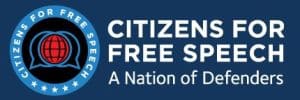About the First Amendment
The U.S. Constitution is the foundational document of the United States of America that was created after a bloody and successful revolution against England. Many of the specific grievances held by early Americans are seen in the First Amendment: Freedom from government-mandated and sponsored religion, freedom of personal speech, freedom of the press, the right to peaceable assembly and the right to petition the government for a redress of grievances. It is not surprising that the first thing blurted out by founding fathers was “Congress shall make no law…” to nullify these precious rights that were viewed as essential to a free society.
However, John Adams, signer of the Declaration of Independence and second President of the United States warned, “Our constitution was made only for a moral and religious people. It is wholly inadequate to the government of any other.”*
With the steep decline of morality and religious virtue in America since the early 1960s, the Constitution as a whole is under unprecedented attack, but no more so than the First Amendment in particular. Today, as the First Amendment is twisted, misused and misinterpreted, its original intent is completely obscured.
The only path to reclaiming the high meaning of the First Amendment is for men and women of moral and religious integrity to assert their influence in their local communities by actually doing it. In other words, the First Amendment is actualized only to the extent that it is practiced.
* John Adams, The Works of John Adams, Second President of the United States, Charles Francis Adams, editor (Boston: Little, Brown, and Co. 1854), Vol. IX, p. 229, October 11, 1798.
